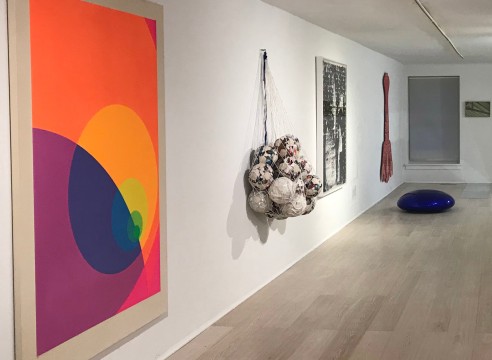
Pablo Picasso was born on October 25, 1881, in Málaga, Spain. Picasso's father began teaching him to draw and paint when he was a child, and by the time he was 13 years old, his skill level had surpassed his father's.
In 1895, when Picasso was 14 years old, he moved with his family to Barcelona, Spain, where he quickly applied to the city's prestigious School of Fine Arts.
In 1897, a 16-year-old Picasso moved to Madrid to attend the Royal Academy of San Fernando. However, he became frustrated with his school's singular focus on classical subjects and techniques.
In 1899, Picasso moved back to Barcelona and fell in with a crowd of artists and intellectuals who made their headquarters at a café called El Quatre Gats ("The Four Cats"). Inspired by the anarchists and radicals he met there, Picasso made his decisive break from the classical methods in which he had been trained, and began what would become a lifelong process of experimentation and innovation.
At the turn of the 20th century, Pablo Picasso moved to Paris, France—the cultural center of European art—to open his own studio. By 1905, Picasso had largely overcome the depression that had previously debilitated him. In 1907, Pablo Picasso produced a painting unlike anything he or anyone else had ever painted before, a work that would profoundly influence the direction of art in the 20th century: "Les Demoiselles d'Avignon," a chilling depiction of five nude prostitutes, abstracted and distorted with sharp geometric features and stark blotches of blues, greens and grays.
The outbreak of World War I ushered in the next great change in Picasso's art. He grew more somber and, once again, became preoccupied with the depiction of reality. His works between 1918 and 1927 are categorized as part of his "Classical Period," a brief return to Realism in a career otherwise dominated by experimentation. His most interesting and important works from this period include "Three Women at the Spring" (1921), "Two Women Running on the Beach/The Race" (1922) and "The Pipes of Pan" (1923).
From 1927 onward, Picasso became caught up in a new philosophical and cultural movement known as Surrealism, the artistic manifestation of which was a product of his own Cubism.
Picasso's most well-known Surrealist painting, deemed one of the greatest paintings of all time, was completed in 1937, during the Spanish Civil War. After German bombers supporting Francisco Franco's Nationalist forces carried out a devastating aerial attack on the Basque town of Guernica on April 26, 1937, Picasso, outraged by the bombing and the inhumanity of war, painted "Guernica." Painted in black, white and grays, the work is a Surrealist testament to the horrors of war, and features a minotaur and several human-like figures in various states of anguish and terror. "Guernica" remains one of the most moving and powerful anti-war paintings in history.
In the aftermath of World War II, Picasso became more overtly political. He joined the Communist Party and was twice honored with the International Lenin Peace Prize, first in 1950 and again in 1961. By this point in his life, he was also an international celebrity, the world's most famous living artist.
Picasso's later paintings display simple, childlike imagery and crude technique. Picasso created the epitome of his later work, "Self Portrait Facing Death," using pencil and crayon, a year before his death.
Pablo Picasso continued to create art and maintain an ambitious schedule in his later years, superstitiously believing that work would keep him alive. He died on April 8, 1973, at the age of 91, in Mougins, France.